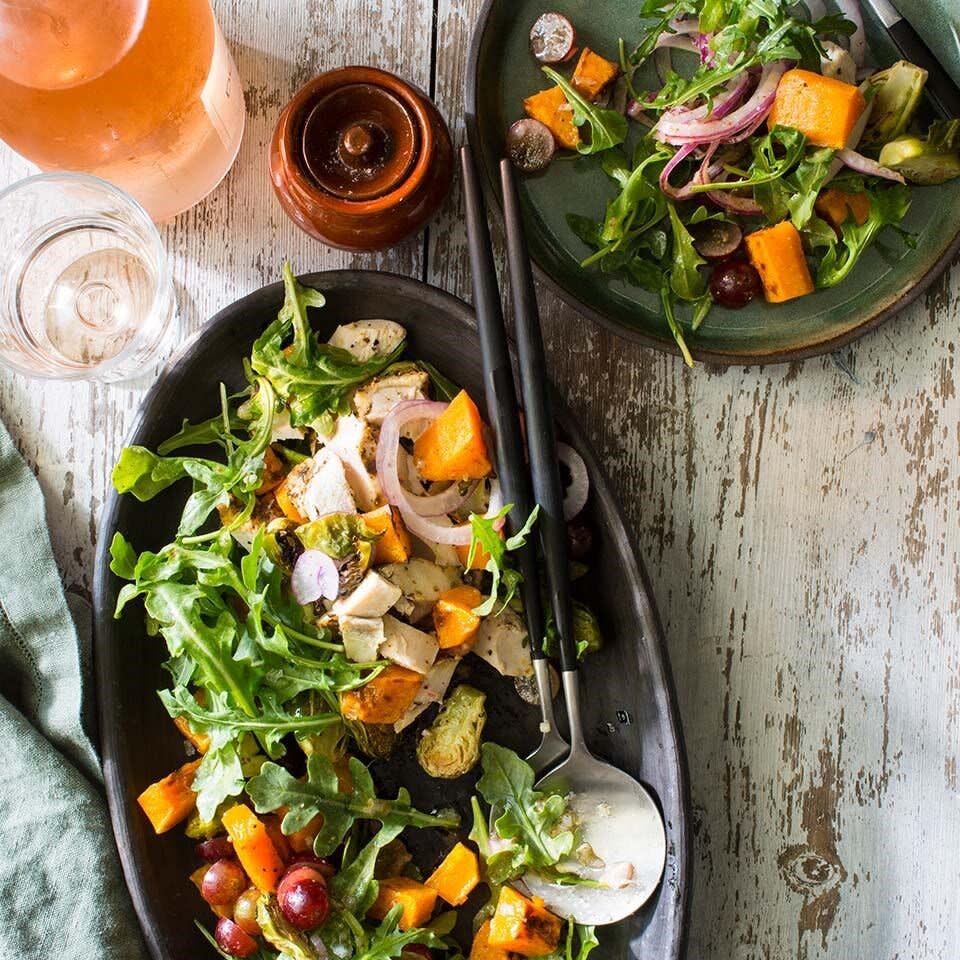Clean-Eating Buyer's Guide to Chicken

Going to the grocery store and trying to buy chicken can be confusing. The following guide can help you interpret all the labels so you can choose poultry that is fresh and free of unwanted additives and raised using standards for sustainability and humane treatment that you're looking for.
Related: Is Rotisserie Chicken Healthy? Here's What a Dietitian Says

Pictured Recipe: Grilled Chicken with Red Pepper-Pecan Romesco Sauce
What to Look for When Buying Chicken
1. The best way to ensure you're buying the freshest poultry is to look at the fat—it should be white to deep yellow, never gray or pale. Make sure the package is well wrapped and leak-free.
2. Check the label carefully to avoid poultry that has been "enhanced" with an added sodium solution—it's higher in sodium than those without added solution. The word "natural" on the label does not guarantee a non-enhanced product. To determine if poultry is enhanced, scan the ingredients on the label for any added solution that is not plain water.
3. Refrigerate or freeze poultry as soon as possible after purchase. If refrigerating, be sure to cook it or freeze it by the "use by" date on the package. If you're freezing poultry for longer than two weeks, make sure it is wrapped tightly, either in a vacuum-sealed package, heavy-duty foil, freezer paper or in a freezer bag. Frozen poultry should be defrosted in the refrigerator, never at room temperature, to prevent bacterial growth.
What Do Package Labels Mean?
Free-Range Chicken
While it might seem to imply more, this USDA-regulated term means only that the birds are granted access to the outdoors.
Certified Organic Chicken
This USDA-regulated term means that all feed must be certified organic: no synthetic fertilizers or pesticides, animal by-products or other additives. Certified organic chicken must also meet "free-range" criteria.
Raised Without Antibiotics
This term indicates that the birds were raised without antibiotics for health maintenance, disease prevention or treatment of disease. Medications not classified as antibiotics may still be used.

Pictured Recipe: Chicken, Arugula & Butternut Squash Salad with Brussels Sprouts
No Hormones
The USDA prohibits the use of hormones in poultry, so while the label "hormone-free" is accurate, it doesn't set one poultry product apart from another.
Natural
One of the most widely used labels, the term means that no additives or preservatives were introduced after the poultry was processed (although certain sodium-based broths can be added; read the ingredients on the package label if this is a concern). "Natural" has absolutely nothing to do with standards of care, type and quality of feed or administration of medications.
Related: How to Marinate Chicken
Vegetarian-Fed or All-Vegetable Diet
The birds were fed a diet containing no animal products. This is a controversial practice because chickens and turkeys are not naturally vegetarian, and poultry feed usually includes some meat and poultry by-products. Also, the birds naturally like to forage for insects when they are able.
Percent Retained Water
To control pathogens like Salmonella, producers must quickly lower the temperature of meat during processing. Most do this by immersing the slaughtered birds in a cold bath, which causes them to absorb water. The USDA requires producers to list the maximum amount of water that may be retained.

Pictured Recipe: Roasted Chicken & Sweet Potatoes
Air-Chilled Chicken
Some producers lower the temperature of meat during processing using an extremely cold blast of air. This process does not result in any retained water.
Certified Humane Raised & Handled
Overseen by the nonprofit group Humane Farm Animal Care (certifiedhumane.org), this label ensures the birds received certain basic standards of care and were encouraged to engage in natural behaviors, such as perching, pecking and scratching, and foraging for food in their bedding. If also labeled "Free-Range" or "Pasture-Raised," the birds must have been raised to these standards as well.
Farm-Raised Chicken
This is not a regulated label, so it can technically be used on almost any poultry products.
Pasture-Raised Chicken
This is not a regulated label, but Humane Farm Animal Care has created a standard for the term that it guarantees. Birds must be outdoors year-round, with access to housing where they can go inside to protect themselves from predators or extreme weather
Related: How to Cup Up a Whole Chicken